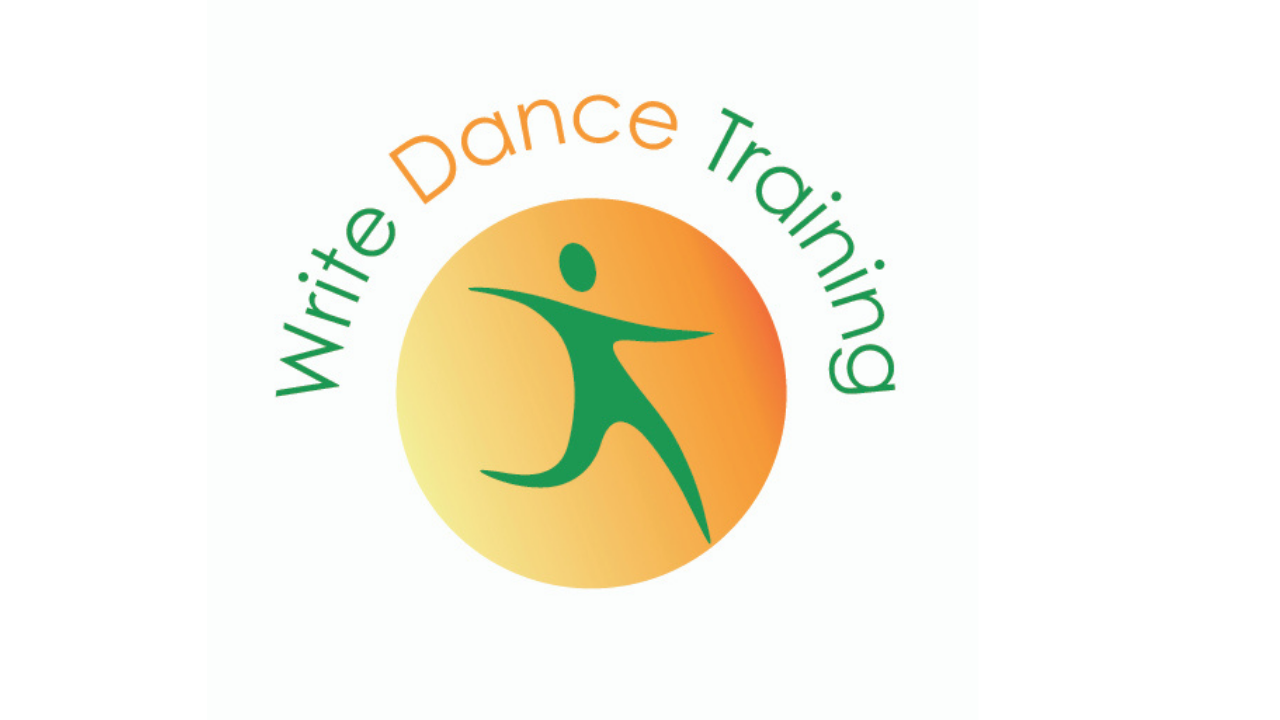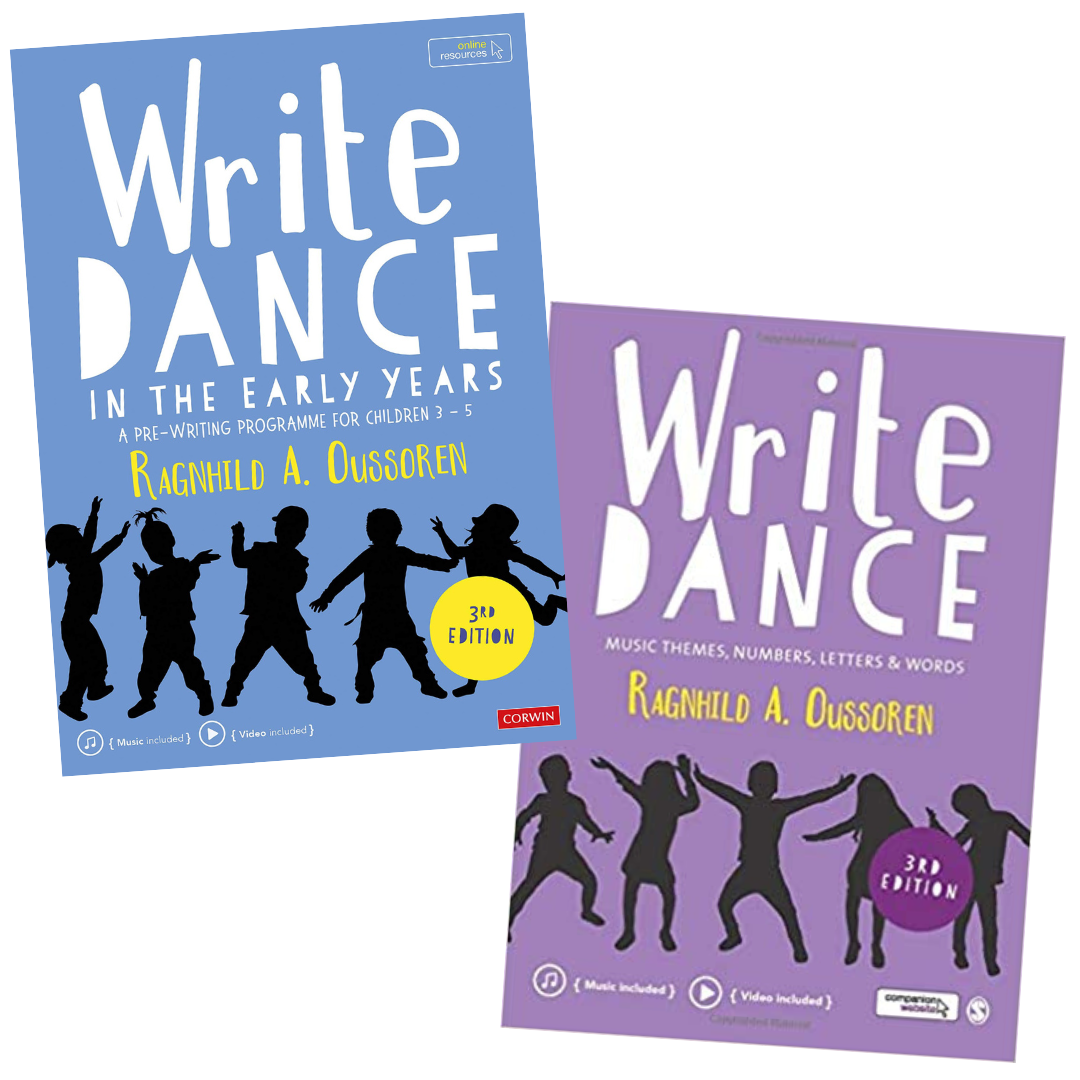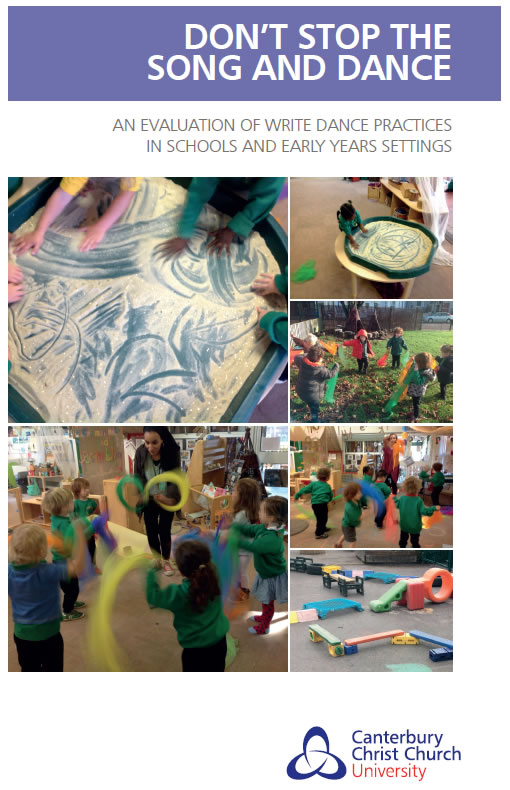A visitor to Murston Infant School observing a handwriting lesson might wonder how it is that children who are leaping and dancing around the hall to classical music can be working on their handwriting.
Murston Infants is situated on the outskirts of Sittingbourne in Kent. Together with the adjacent nursery it serves a community with a very high level of need. The nursery and the school recognised that conventional methods of teaching writing were just not working and so decided to find a radical way of tackling the problem. The teacher-in-charge of the nursery first learnt the Write Dance method watching a video and reading the teacher’s guide. She gained more confidence when she visited other schools that had adopted the Write Dance approach. The Deputy had a personal as well as a professional interest in Write Dance because her own children had made great progress in writing at their school, Ethelbert Road Infant School in Faversham, because it had been adopted as a whole school policy.
What is ‘Write Dance’? It is a programme to help pupils develop a fast, fluent, flexible and legible handwriting style. The theory and the underlying principles of ‘Write Dance’ are supported by the approaches such as ‘Instructional Preferences and Learning Styles’. Teachers who have heard of ‘Brain Gym’, ‘Brain Compatible Learning’, ‘Emotional Literacy’ or ‘Learning to Learn’, will recognise the same principles in Write Dance.
Write Dance was first introduced to English Schools by the author, Ragnhild Oussoren. She approached Kent LA Learning Support Team to help her organise a series of workshops. Ragnhild is a graphologist; she devised the programme during her professional career when working to improve students’ handwriting. Her research taught her that physical exercises plus ‘movement-drawings’ produce the best handwriting results. This theory is well known among physiotherapists and occupational therapists in relation to pupils who have motor difficulties.
The reason that Write Dance is revolutionary in English, and now Welsh, schools is because the teacher uses music to teach the movements to the whole class. Good practice for pupils who have difficulty learning to write from an early age is good practice for all children. The overwhelming success is shown not only by the resulting cursive handwriting by the time the pupils reach year four, but also by the fact that the pupils are active learners who engage in learning activities with their peers and their teachers.
Music, dance with movement-drawings and mark-making is used to teach the necessary experiences and physical skills to young children helping them to learn a fluent, flowing and flexible handwriting. Story telling and visualisation strategies facilitate the essential language, ‘visuo-motor’ and visual perceptual skills. The national writing strategies advocate that pupils should be taught cursive handwriting. The best way to introduce cursive script is to teach gross motor movements followed by the same (but smaller) fine motor movements to make Write- Dance and ‘sound-scape’ pictures.
After some initial training, the staff at Murston Infant School went on to develop exercise sequences and activities to supplement the Write Dance lessons that can be found in the published materials. This teaching resource has facilitated consistency and progression across the school. Every teacher has guidance notes and a bank of resources. This allows them to encourage creativity within the lessons and gives them the opportunity to add their own personal interpretation, often through their personal taste in music.
The next step for the school staff will be to invite the parents to visit the school, watch Write Dance in action and to follow the progress of their children’s learning and development.
“We have only really taken to Write Dance since last September but the difference it has made to the children’s handwriting has been quite unbelievable. Children who found singular letter formation difficult are now using a joined script fluently. Children who had no confidence in their writing are now freely and willingly using a joined script throughout the school day. The teachers’ handwriting has also improved!”
Dot Bromley – Head Teacher Murston Infants.
So how does it look in a lesson?
Always start with movement, dance and physical actions. Use the hall or make space in the class to learn the actions and dance movements. After the class has copied the dance a few times, do the actions to the music. As soon as the class is ready, do the dances for the first five minutes then draw the dance movements on paper or on chalk/white boards? The children will quickly learn the sequence and perfect the actions. Use the ideas in the published materials. Children will learn to recognise the music and the key words, then use these as signals or cues and will be able to respond with physical movements and dance. You can do this as a short activity moving from literacy to numeracy or as group work.
Children use both hands to draw, left and right together, in unison, and in an alternate motion harmonising and balancing their skills. To implement Write Dance, teachers need to understand the philosophy of seven movement principles in Write Dance, these are listed as:
- Straight lines
- Rounded shapes
- Circles
- Angles
- Direction
- Size and
- How to cross the mid-line.
A theme running throughout the teaching sessions is the experience of ‘opposites’. For example when the children copy the teacher and make firm downward movements with their whole bodies, the teacher will then demonstrate and emphasise an equally strong and firm upward movement.
All the lessons are fun and pupils learn that everything they do is right. Very young children may need to be shown how to hold a crayon in each hand without using a rigid hammer grip. The Write Dance method is to use short and chunky crayons for an ‘all –finger’ grip because this ensures maximum flexibility in the wrist. The teacher models the movements and makes sure that the children vocalise the actions that they make. The teacher reminds the children to maintain the rhythm by bending their knees in time with the music, the singing, the rhymes or the commentary. The children always need to be reminded to consciously breathe.
Children’s learning and development is supported through the story-telling, the movement sequences and visualisation techniques, which are set to music.
The lessons provide children with the physical experiences of balance, co-ordination and harmony. They learn feelings of relaxation in contrast to the opposite feeling of muscle tension.
Basic resources in the teaching of Write Dance include large sheets of paper and boards painted with blackboard paint. Paper and boards should be both on the floor and table (horizontal), and attached to walls (vertical). Very young children can be encouraged to draw in shaving foam on the table. There are many adaptations and extension activities that have been devised by teachers.
It is not surprising that the benefits reach beyond handwriting alone. Write Dance is another tool for teachers and practitioners to include in their ‘tool-kit’ of resources and approaches to support children’s social and emotional development.
Write Dance is first and foremost fun for both teachers and children and so it enhances self-esteem. Pupils learn that they can make choices, express their feelings and risk filling large sheets of paper with their ‘writing-drawings’. Teachers benefit from having a way to engage and activate the class while providing the best start for all young children learning to write. The results are truly remarkable, especially in those schools where the ethos and culture create opportunities for children to become active learners.
“Taking into account that cohorts vary, standards in writing have steadily improved due to our approach to the teaching of cursive handwriting, with particular reference to the interdependency of the development of fine and gross motor skills throughout our curriculum provision. Write Dance plays a significant role in enhancing and supporting this across the Foundation Stage and Key Stage 1.”
Sylvia Wilson, (2003), Head Teacher Herne Infant School.
Diana Strauss is the Co-founder of Write Dance Training, a Write Dance Trainer and a Senior Lecturer at Canterbury Christ Church University.
If you would like to find out more after reading this article you can watch the DVD, read the teachers’ book and listen to the CD. Paul Chapman Publishing / SAGE Publications
1 Oliver’s Yard, 55 City Road, London EC1Y 1SP
T: 020 7324 8708 F: 020 7324 8600 www.sagepub.co.uk
Or you can visit Herne CE Infant School, Palmer Close, Herne,
Herne Bay, Kent CT6 5DA. Ask to speak to Sylvia Wilson.
Telephone: 01227 740793.
Email: headteacher@herne-infant.kent.sch.uk


